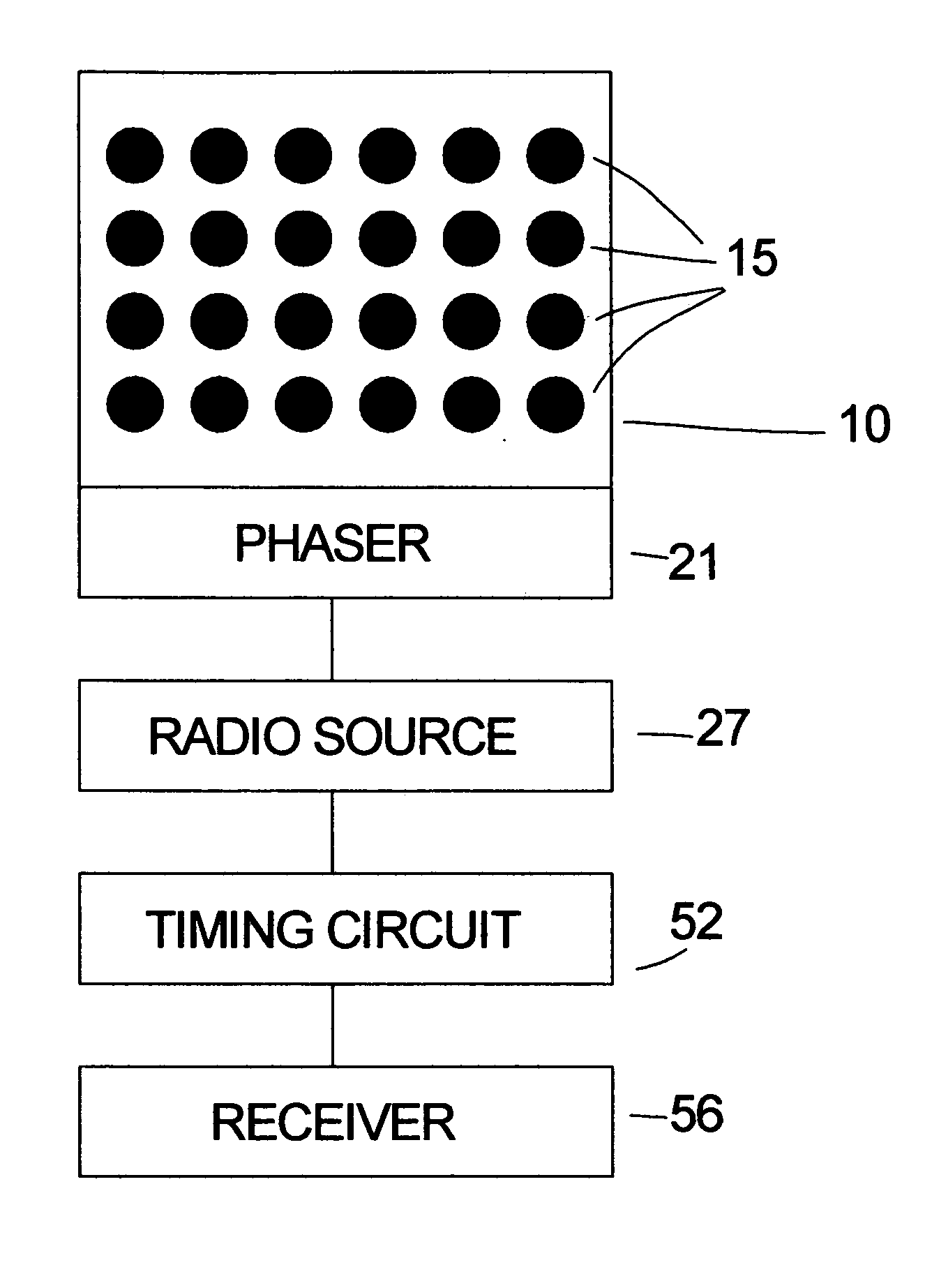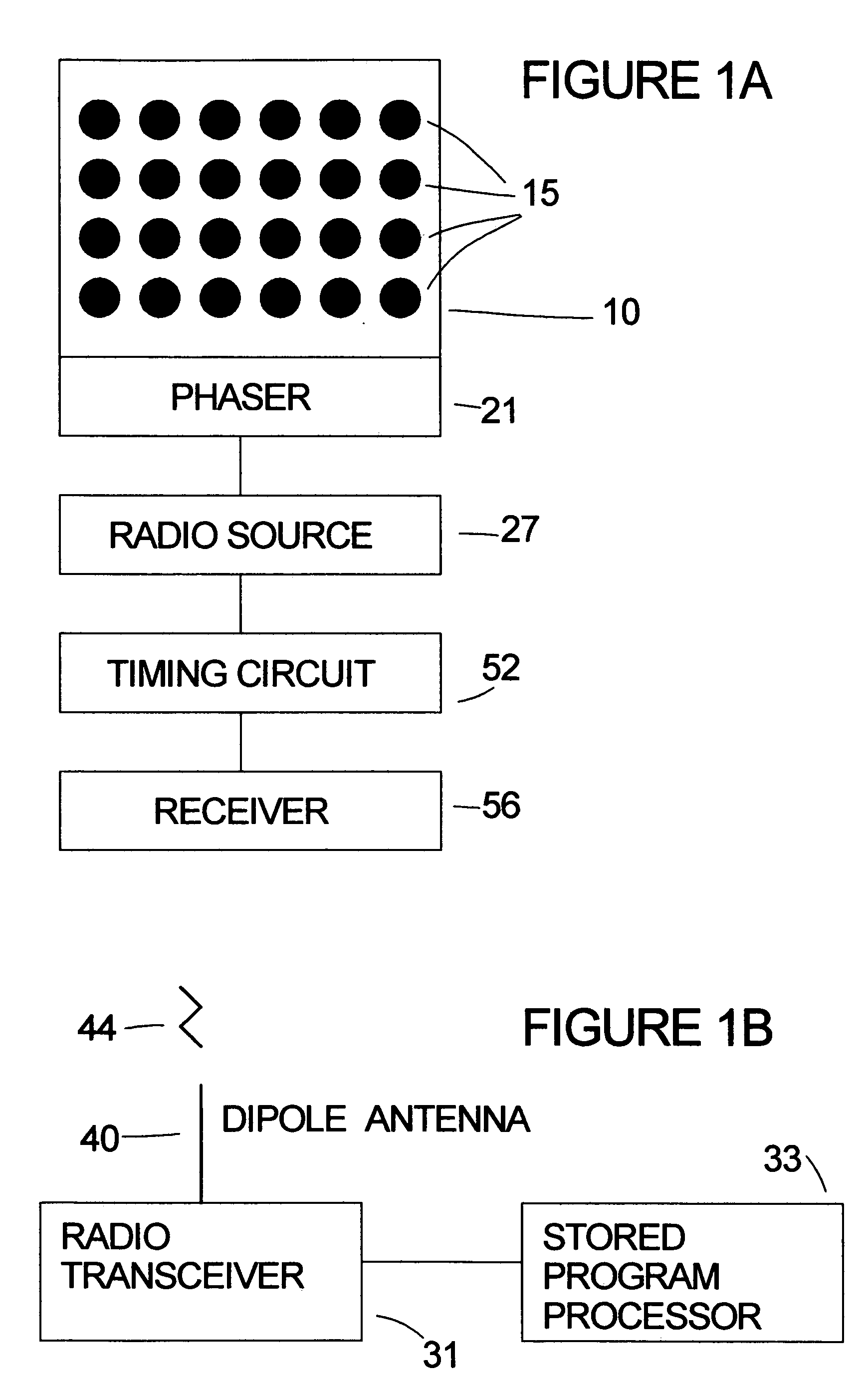System for the relative navigation of aircraft and spacecraft using a phased array antenna
a technology of phased array antennas and radio navigation systems, applied in the field of navigational systems, can solve the problems of disadvantageous rotation of radio beacons, simple and more compact electronic systems, and limited size and weigh
- Summary
- Abstract
- Description
- Claims
- Application Information
AI Technical Summary
Benefits of technology
Problems solved by technology
Method used
Image
Examples
Embodiment Construction
[0016] Referring to the FIG. 1A, a phased array panel 10 at a transmitting station has a plurality of circular microstrip antennas 15 on it. Each microstrip antenna 15 is conductively connected to the phaser circuitry 21 that controls the time that the radio signal from the radio source 27 is received by each antenna element 15 for transmission. This time difference affects the phase for each antenna signal and hence the directionality of the combined signal from all antennas. Attached to the radio signal source 27 is a computer-controlled timing circuit 52 that energizes the array. Attached to the timing circuit 52 is a receiver 56 that receives a query pulse.
[0017] In one embodiment, phased array antenna panel 10 comprises 24 circular microstrip antennas 15 in a four row by six column array. A radio navigation system in accordance with the present invention may work with as few as four microstrip antenna elements; however, the more microstrip antenna elements there are in the pha...
PUM
 Login to View More
Login to View More Abstract
Description
Claims
Application Information
 Login to View More
Login to View More - R&D
- Intellectual Property
- Life Sciences
- Materials
- Tech Scout
- Unparalleled Data Quality
- Higher Quality Content
- 60% Fewer Hallucinations
Browse by: Latest US Patents, China's latest patents, Technical Efficacy Thesaurus, Application Domain, Technology Topic, Popular Technical Reports.
© 2025 PatSnap. All rights reserved.Legal|Privacy policy|Modern Slavery Act Transparency Statement|Sitemap|About US| Contact US: help@patsnap.com



